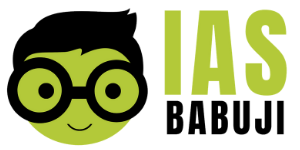Today in the article, let us learn about the Zamindari System in India. Let us get all information on the Zamindari System, which was introduced, and the abolition of the zamindari system. The IAS exam needs to get the best results in the exam. However, one might feel difficult to understand all the points. Therefore, we have added all the necessary enough points for the UPSC exam preparations. Before applying for any exam, one must first know the needs of the exam. Then, only you can apply for the exam. Therefore, it goes the same with the IAS exam.

Introduction
To begin with, A zamindar (also known as zomindar, zomidar, or jomidar) in the Indian subcontinent. After the independence of India, the Government of India was set up within the specific situation of the Directive Principles of State Policy in the Constitution of India. Below we have added complete information that will give you a clear understanding of the Zamindari System in India, the abolition of the zamindari system, and was introduced by whom.
Highlights of the IAS Exam Procedure
Before getting the complete information on the topic, let us have a quick look at the IAS exam. The UPSC authority holds the IAS exam. Further, there are three main stages of the exam.
- Preliminary Exam
- Main Exam
- Interview Round
One must clear all stages of the exam to become an IAS officer. In the first round, there are two papers, and in the second round, there are nine papers. One must be very careful when choosing the optional subject for the exam. One must understand their skills and interest. Don’t randomly choose any subject as it is difficult for you to score good marks in the exam. In addition, one must try to study from the best books for each subject. Finally, one must visit the official site for more information on the IAS exam. Click Here.
Zamindari System
The Zamindari System is an autonomous ruler of a province. Further, the zamindars play a significant role in the regional histories of the subcontinent. In addition, Land Revenue or Zamindari System was one of the significant sources of income for Britishers in India. Further, there were three types of land revenue during the British rule in India. They are
- The Zamindari System
- The Mahalwari System
- The Ryotwari System
All three systems vary with respect to the mode of payment of land revenue.

The Zamindari System
As mentioned in the article, this particular system was introduced by Lord Cornwallis in 1793 through Permanent Settlement. Further, land revenue was collected from the farmers under this system by the intermediaries known as Zamindars. The system was more prevalent in West Bengal, Bihar, Odisha, UP, Andhra Pradesh, and Madhya Pradesh.
Major Activities during the Zamindari System
In the first place, the Champaran Satyagraha (1917) was against forced indigo cultivation. It was by Mahatma Gandhi in India was related to peasants. Further, Kheda Satyagaraha(1918) was against high taxation following a plague epidemic and crop failure. In addition, many organizations were independently fighting for the rights of peasants of the middle and lower levels. Further, issues related to agriculture and peasants are present in the list of Fundamental Rights and d Economic Programme.
The Mahalwari System
Under this system, the farmers’ land revenue was collected from the village headmen on behalf of the whole village (and not the zamindar). Further, this particular system was introduced by the Englishman Holt Mackenzie in the North-Western Provinces of the Bengal Presidency. Later, in this system, one whole village was converted into one bigger unit called ‘Mahal’ and treated as one unit for the payment of land revenue.
The Ryotwari System
According to Ryotwari System, it is by Captain Alexander Read and Sir Thomas Munro at the end of the 18th century. Further, the farmers paid the land revenue directly to the state. It was introduced in the southern Indian states and provinces like Malabar, Coimbatore, Madras, Assam, and Madurai. Later, it was adopted in Maharashtra and East Bengal. Under this system, an individual cultivator is called a Ryot.
Importance of Land Reforms
- In the first place, changes in the land are considered major apparatuses of financial change in India.
- Further, the methodology of agrarian change was intended to change and modernize Indian agribusiness.

Zamindari System during the Mughal Period
The Zamindari System started in India during the Mughal period. When Babur acquired North India during the Mughal Period, many autonomous and semiautonomous rulers were Rai, Raja, Rana, Rao, Rawat, etc. In Persian chronicles, they are zamindars and marzabans. Further, they were the vassals who ruled, mostly hereditarily, over their respective territories. During the fifteenth and sixteenth centuries, workers perceived the Zamindars as owners and recognized their entitlement to remove them and to give their property.
Zamindari System during the British Period
Further, during the British Period, the East India Company established itself in India by first becoming zamindars of three villages of Calcutta, Sultani, and Govindpur. Then, during this time British generally adopted the extant zamindari system of revenue collection in the country’s north.
Effect on Agriculture due to Zamindari System
The Zamindari system in India by British gad effects on the Agriculture and peasants of India. As the zamindars were the landowners, they had the right to evict the peasants as per their whims and fancies. In addition, when zamindar wanted a higher share to produce, and peasants were not in a position to pay, the peasant was forced to evict his land.
Abolition of the Zamindari System
Finally, the Zamindari system ended after the independence. In 1951, the first amendment of the Constitution of India amended Article 19 and Article 31. Further, the land revenue systems of British India were an important focus of the freedom movement. Zamindar plays a crucial role in the life of small field workers and small farmers who have less land.
Zamindari Abolition Act
Let us learn quick facts related to the Zamindari Abolition Act below.
The Zamindari Abolition Act of 1950 is one of the significant agrarian reforms of the Government of India after independence. Later, the Mughals’ status of the Zamindars was varied; the British had uplifted their status and made themselves subordinates of the crown. Then, the process of the f the abolition of the zamindari system had begun long before the enactment of the Constitution. Further, when the Constitution came into effect, the Right to Property was a fundamental right under Articles 19 and 31.
Conclusion – Zamindari System
Get all information on the Zamindari System, and Zamindari System was introduced by whom. We have covered all details that will help you with the IAS exam preparations. One can note all vital points while reading the above article. One must look after various things while preparing for the exam. To help you with the same, we have added all details related to the IAS exam right from the exam requirements, exam pattern, syllabus, books, tips, and other things. Find the necessary links and study them. In addition, above, we have covered the IAS exam procedure for the complete details.
To understand the paper clearly, one can give mock tests and test series. Go through the previous year’s papers and books. Various platforms have some test series, study material, etc. Further, one can study independently for the IAS exam or go to coaching classes. One must make the proper use of time and energy for the exam. One must read the success story of the IAS officer to know about the IAS officer’s role. We wish you good luck with the IAS exam preparation, and prepare well for the exam.
Find all other IAS exam study materials here. In addition, we have added all information on various topics of the UPSC exam.

FAQs – Zamindari System
Go through the FAQs below for more information on the zamindari system and other details.
Zamindari System (Permanent Land Revenue Settlement). Zamindars have the right to collect the rent from the peasants.
The supreme court upheld the rights of Zamindars. However, by 1956, the Zamindari abolition act was passed in many provinces.
This system started in India in the year 1793.
Editor’s Note | Zamindari System
The article provides you with all details related to the abolition of the Zamindari System and introduced by who. We have added all points that will help you with the IAS exam preparations. Further, know the complete procedure of the exam and visit the official site for more information. Then, to clear the IAS exam one must work hard and put in all efforts for the best results. As we all know there is a lot of competition one must put in efforts, energy, and time. Then, lonely one can clear the exam. Try to visit the links above for more details. Good Luck with your exams, Try to follow the above rules for the best results in the exam.






